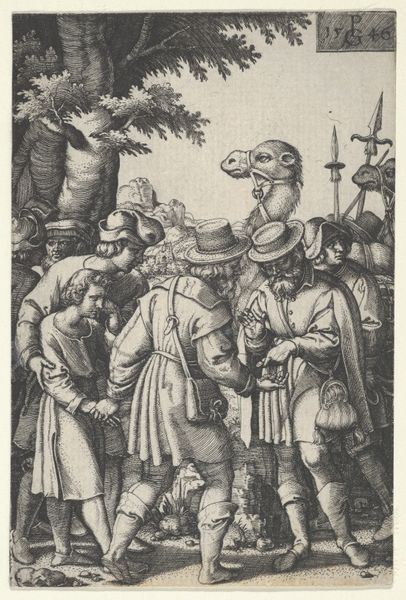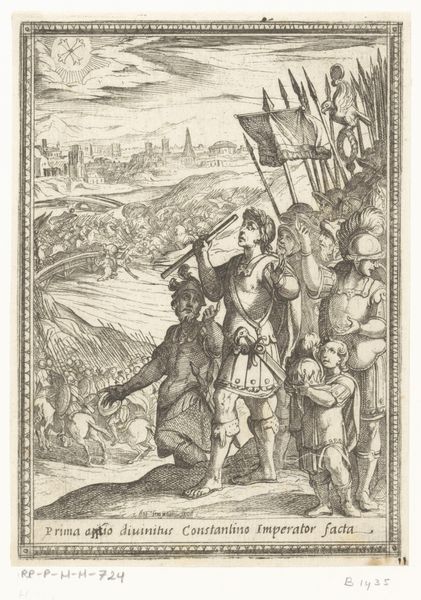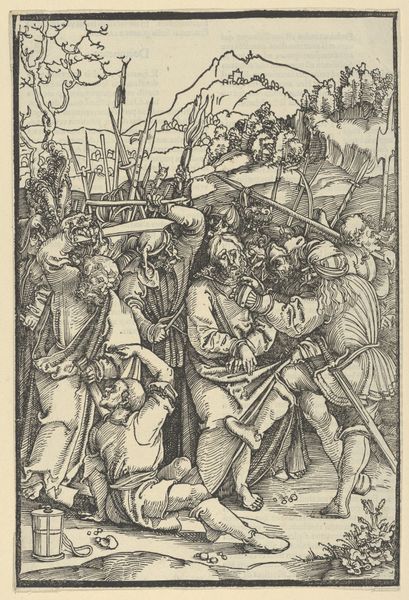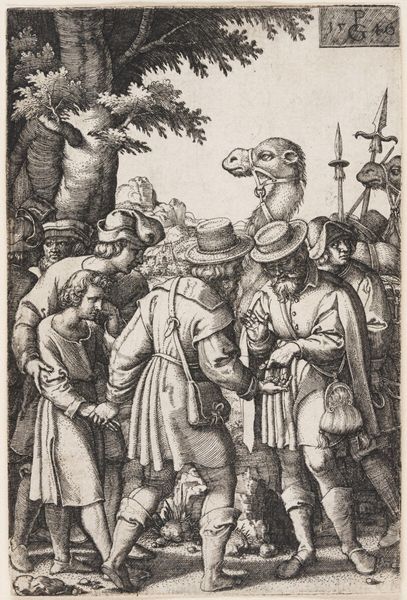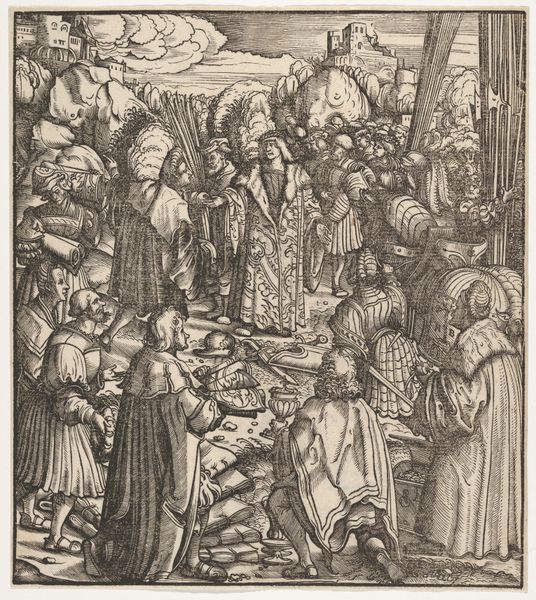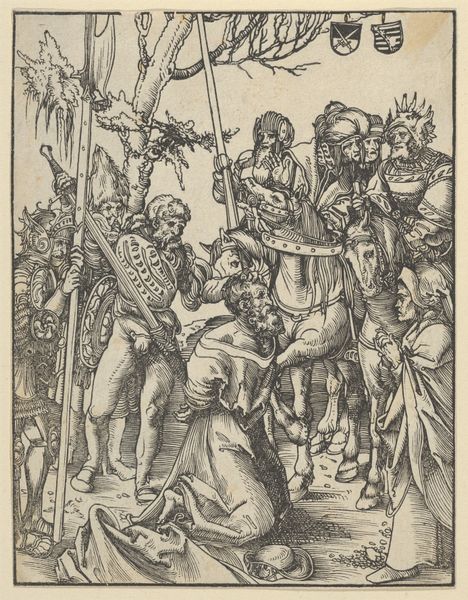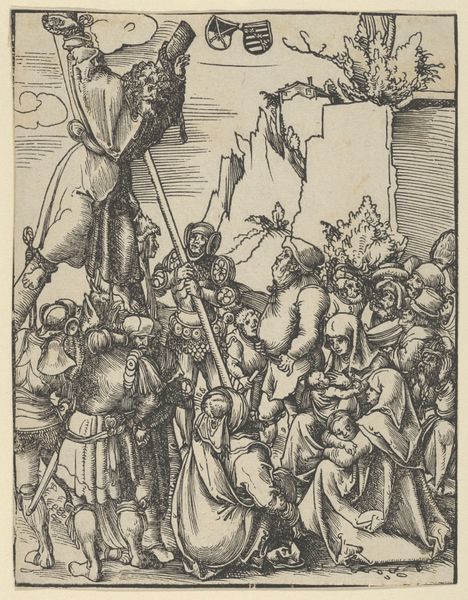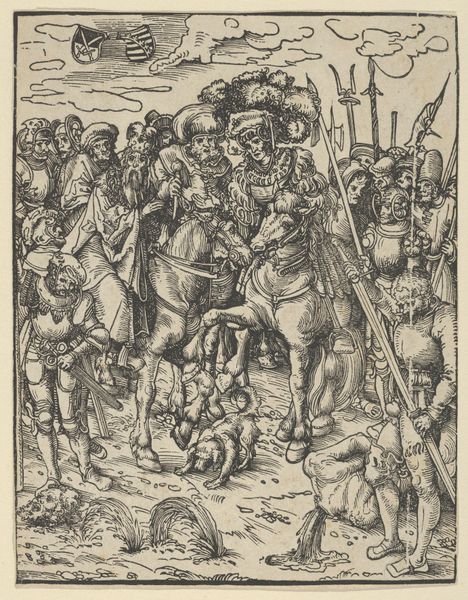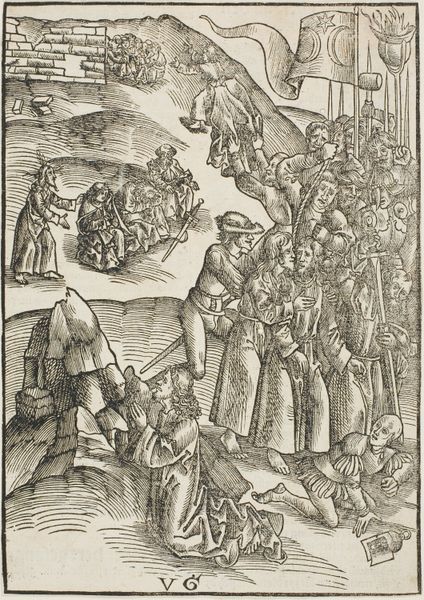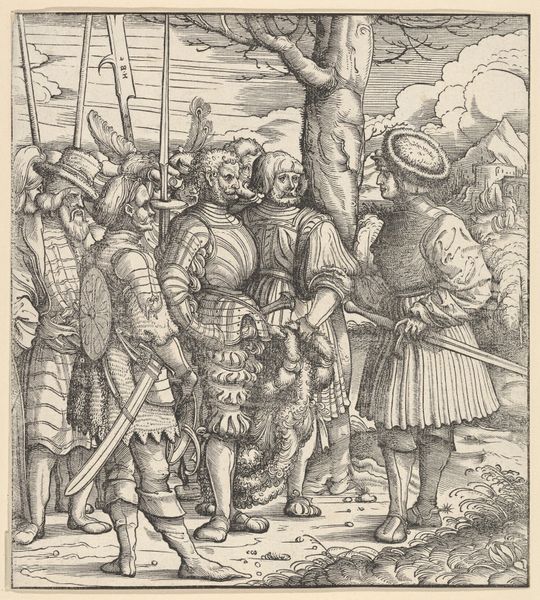
The New Treaty between King Philip and Henry VII, from "Der Weisskunig" 1775 - 1800
0:00
0:00
drawing, print, woodcut
#
drawing
#
pen drawing
# print
#
figuration
#
soldier
#
woodcut
#
history-painting
#
northern-renaissance
Dimensions: Sheet: 8 3/4 × 7 3/4 in. (22.2 × 19.7 cm)
Copyright: Public Domain
Curator: Hans Burgkmair created "The New Treaty between King Philip and Henry VII, from 'Der Weisskunig'" around 1775-1800. This print, currently held at The Met, offers a glimpse into diplomacy of the Northern Renaissance through drawing, woodcut, and pen detailing. Editor: My first impression is the density of detail. The composition feels almost overloaded—a testament, perhaps, to the laborious nature of woodcut, but also to a fascination with meticulous representation. The mood is…serious, very serious, formal. Curator: Absolutely. The figures stand rigidly, enveloped in heavy armor, their faces conveying almost no emotion. But it's essential to remember the context. Burgkmair was actively involved in shaping the public image of Maximilian I, Holy Roman Emperor. This print, part of a larger series, seeks to legitimize Maximilian’s reign and create a specific historical narrative around diplomacy, kingship, and succession. It showcases alliances as visual spectacles of power and patriarchal rule. Editor: Power indeed. Structurally, the ship looming in the background signifies the might backing the treaty, its sails full, moving steadily forward—it really adds to the dramatic effect. Also, observe the way Burgkmair employs hatching to define the forms—especially the metallic sheen on the armor! Curator: But consider also how these treaties often mask power imbalances and colonial ambitions. While visually emphasizing parity through near-identical figures exchanging documents, we must critically ask: Who benefits, and who is erased in this narrative of royal exchange? The exclusion of other voices is precisely what elevates the patriarchs and secures their continued reign. Editor: I understand your point—yet, I find it compelling how effectively Burgkmair guides our eye. The placement of the two monarchs at the central focal point, along the vertical and horizontal axis, immediately highlights the relationship between both as essential to understanding the meaning of the work. Curator: Indeed, but as scholars of Renaissance prints, shouldn't we be examining the symbolism and meaning-making within these supposedly simple visual representations? By contextualizing this piece in the socio-political moment that produced it, we illuminate aspects that might otherwise be glossed over. Editor: A good reminder for a fuller appreciation! Thank you. I've been nudged to remember, not just what is shown but what is hidden. Curator: Thank you. It's a fruitful path when exploring visual and cultural texts.
Comments
No comments
Be the first to comment and join the conversation on the ultimate creative platform.
